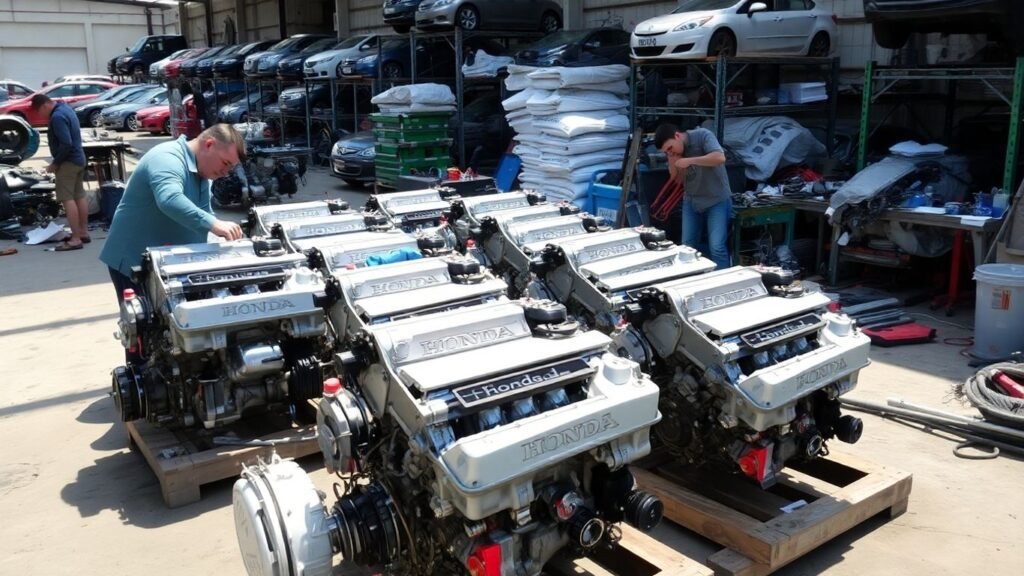Trying to find good used Honda parts in 2025 can feel like a wild goose chase. You don’t want to waste time or money on junk, and it’s easy to get lost in all the listings out there. That’s where Honda Engine Wreckers come in. These folks focus on Honda vehicles, so they know the ins and outs of every model and year. Whether you’re fixing your daily driver or working on a project car, picking the right wrecker makes a big difference. Here’s what you need to know to make sure you get parts you can trust, without any headaches.
Key Takeaways
- Specialized Honda Engine Wreckers know exactly which parts fit your car, saving you time and hassle.
- Always ask for photos and condition reports before you buy any used part.
- Make sure you have your VIN and engine details ready to get the best possible match.
- Check the warranty and return policy so you’re not stuck with something that doesn’t work.
- Buying from Honda Engine Wreckers helps you save money and is better for the environment.
Why Choose Honda Engine Wreckers for Used Parts
Expertise in Honda Models and Generations
Honda engine wreckers are not just regular salvage yards—they’ve spent years working specifically with Hondas, so they know the ins and outs of every generation and trim. You could be looking for a part from a base model Civic or the top-end Accord, and they’ll know the difference in wiring, sensor placement, or even seat mounts. Dealing with specialists who focus only on Hondas saves you from wrong-fit headaches and compatibility mix-ups. It’s just quicker to work with someone who instantly understands what makes a CR-V from 2009 different from the one in 2011.
If you’ve ever shown up at a random yard and they handed you a part “about the right size,” you know the stress of guesswork. With a Honda-specific wrecker, that’s almost never the case—they deal with these quirks daily.
Access to Hard-to-Find and Classic Parts
Finding parts for an older or rare Honda? Specialized wreckers often save the things most stores won’t even try to stock. Swapping a gauge cluster for a ‘97 Prelude or tracking down an OEM dash vent for a ‘90s Civic hatch? These shops are often the only ones who still have what you need on the shelf—or know where to get it. Their networks sometimes include local clubs and forums, so you get better odds tracking down rare or discontinued items.
| Model Year | Odds of Finding Parts (General Yard) | Odds at Honda Wrecker |
|---|---|---|
| Before 2000 | Low | High |
| 2000–2010 | Medium | High |
| 2011–2024 | High | High |
OEM Fitment and Compatibility Advantages
Most people forget how important an exact match can be, especially for parts that impact safety or drivability. When you go to a Honda wrecker, you’re looking at inventory that’s actual OEM—meaning the same brand, material, and spec your car came with from the factory. You won’t have to mess around with adapting brackets or sensors, and you avoid the problems with sometimes questionable aftermarket components. Electronics plug right in. Body panels line up. It just works, so you’re back on the road, not stuck in your driveway trying to make two parts play nice together.
How Specialized Honda Engine Wreckers Ensure Quality
Comprehensive Part Grading and Testing
When you buy from a Honda engine wrecker that knows their stuff, every part gets checked out before it hits the shelf. These pros actually run through standard tests—compression tests for engines, power checks for starters, or basic mechanical inspections for mounts—to weed out any problems. Grading comes in handy too, and here’s usually what you get:
| Grade | Description | Usual Condition |
|---|---|---|
| A | Like new, minimal wear | Clean, tested, barely used |
| B | Good, some signs of use | Functional, small blemishes |
| C | Worn, but works | Visible wear, still operational |
This little grading system means you’re not just taking a gamble. You’ll have some idea what you’re buying—even before it shows up at your door.
Warranty and Satisfaction Guarantees
Most reputable Honda wreckers don’t leave you hanging after the sale. If that used Civic alternator croaks within a month, many places offer a basic warranty—sometimes 30 days, sometimes more. What matters is they’ll swap it or refund you, with as few headaches as possible. There can be some exceptions if you install the part wrong, but generally, they stand by what they sell.
Even if you’re buying used, these warranty offers show the shop’s willing to bet the part will work just fine. It’s a small but solid bit of backup if things don’t line up.
Honda-Specific Knowledge for Accurate Matching
Dealing with a shop focused on Hondas means they actually know the details—like how an Accord V6 alternator from 2008 isn’t the same as the one from 2011, or how certain sensors have updated plugs. This insider knowledge makes a difference when it comes to getting your part right the first time.
A store with Honda know-how can:
- Match your VIN with the exact part version for your trim, whether you’ve got a hybrid, Si, or something rare like a Crosstour
- Tell you if that 2004 Civic door latch will fit your 2008 (spoiler: probably not)
- Give honest advice if you should swap an entire assembly or just a small sensor or gasket
Getting the wrong part is a waste of everyone’s time, so sticking with specialists who know Hondas saves you money, time, and frustration. That’s why, over the years, Honda engine wreckers that focus on doing one thing right usually end up with the happiest customers.
Evaluating the Inventory and Services of Honda Engine Wreckers
Understanding what a Honda engine wrecker has—and how they manage their parts—can make a world of difference when you’re searching for the exact fit for your Civic, Accord, or CR-V. Not all wreckers stock the same parts, and their approach to service varies. Knowing how to examine a wrecker’s inventory and customer support before making a purchase saves a lot of hassle down the road. Sometimes I find a wrecker with a huge warehouse, but the real test is how helpful and accurate they are in matching parts to my car.
Checking Availability for Your Year and Model
Whether you drive a fifteen-year-old Fit or a relatively new Pilot, start with the basics: does the wrecker even have what you need? Some wreckers update their stock online, listing vehicles, engine codes, and even mileage, while others require a phone call. Matching your model’s year, trim, and engine type is critical—Honda changes small things between generations, and an LX won’t always take the same door handle as an EX. It’s worth asking directly because many wreckers hold some vehicles for parts, not public sale, and what’s available shifts daily.
Understanding Grading and Condition Reports
Condition grading can be a lifesaver. Most wreckers use a loose grading system, like A (almost new), B (used, minor wear), or C (works, but plenty of battle scars). Here’s how a grading table might look:
| Grade | Description | Common Example |
|---|---|---|
| A | Clean, low-wear, tested | Late-model alternator |
| B | Functional, minor flaws | Door panel with scuffs |
| C | Heavy wear, still usable | Old seat with tears |
Always ask for photos or even a short video, especially for major buys like an engine or transmission. Blockquote below sums it up:
Quick photos can tell you more than any grading sheet ever will. I learned that the hard way once with an engine—showed up and it looked way rougher than described.
Assessing Shipping, Returns, and Support Options
After you find the right part, dig into the details on how you’ll actually get it, and what happens if there’s a problem. Many reputable wreckers offer flexible shipping: local pickup, pallet freight, even courier for small bits. Ask what happens if a part isn’t right—some dealers charge a restocking fee or deduct shipping from the return. Support matters too; if you’re working on a complicated swap, a good wrecker is willing to answer questions about fit, installation, or packaging. That extra help can save you from making a frustrating and expensive mistake.
Key Tips for Buying from Honda Engine Wreckers

Communicate Specific VIN and Engine Details
Giving the wrecker your full VIN and engine code makes it much easier to match the right part for your Honda. Different trims or options, even just a year apart, can change up everything from wiring connectors to mounting brackets. The more you share up front—paint code, transmission type, or if it has things like VTEC or hybrid systems—the less back-and-forth you’ll have and the less likely you’ll end up with a part that doesn’t fit.
Hondas can be quirky; a simple trim difference may spell trouble if the yard isn’t clear on the details. Most problems happen because someone guessed the engine or trim code, instead of sending it over from the start.
Request Photos and Inspection Reports
Don’t settle for generic catalog photos—ask for clear, recent pictures of the exact part. Look for close-ups of plugs, covers, labels, and wear spots. Inspection reports are pretty normal with reputable wreckers. These write-ups usually spell out cosmetic issues, mileage, and any testing already done. Not all marks and scratches are bad, but knowing ahead of time means no surprises when it arrives.
Clarify Warranty Terms and Return Policies
Some wreckers include a 30-day or 90-day warranty, especially on engines, electrical bits, or big-ticket items. Make sure you ask if returns or exchanges are allowed—sometimes there’s a restocking fee or return shipping isn’t covered. Here’s a quick look at typical warranty policies:
| Part Type | Typical Warranty | Return Possible | Notes |
|---|---|---|---|
| Engine | 30–90 days | Yes | Mileage restrictions |
| Electronics | 30 days | Often | Must not be tampered |
| Body Panels | No/7 days | Usually | Cosmetic only |
If you’re not clear about returns, you could get stuck with a part you can’t use. Ask about the fine print before money changes hands.
Prepare for Shipping and Logistics
Buying from out of town? Shipping engines, transmissions, or heavy stuff takes coordination. Get a quote for delivery up front—it might cost more than you expect. Some wreckers ask for a business delivery address (like a garage) for big pallets, and tailgate lift fees can pop up without warning. Have pallet space cleared and any tools you might need on arrival.
Engine swap plans have been ruined because the freight company couldn’t reach the buyer or no one was around to unload. Plan ahead. A little phone time with the shipper can save you a day of stress.
Common Used Honda Parts Sourced from Engine Wreckers
Complete Engines and Components
If you need an engine or just parts of it, Honda engine wreckers often have a long list of choices. Folks are usually surprised by how many rare or discontinued engines and components you can dig up if you ask the right wrecker. You’ll find everything from entire VTEC setups to individual sensors and engine mounts.
| Part Type | Typical Testing Done | Notes |
|---|---|---|
| Full Engine | Compression test, Leak-down | Usually mileage disclosed |
| Alternator/Starter | Bench-tested | May include warranty |
| Sensors (O2, MAP) | Function check | OEM ID confirms fit |
| ECU/Module | Power-on test | VIN matching possible |
Sometimes, I’ve seen someone land a nearly complete, low-mileage J-series from an Accord that ran better than half the cars on the block—if you’re patient and know how to ask.
Interior and Trim Pieces
Finding a matching dash, door panel, or cluster can be tough if your Honda isn’t new. Wreckers who deal almost exclusively with Hondas get why color and trim codes matter so much, especially for matching older upholstery run or the weird textured plastic from a late-90s Accord. It’s also normal to find climate control panels, window switches, and clusters that are already bench-tested before they sell you anything.
| Interior Component | Typical Check | Interchangeability |
|---|---|---|
| Instrument Cluster | Tested lights, ODO | Model/year specific |
| Seats/Upholstery | Visually checked | Bolsters/cloth match? |
| Dash/door trim | Hardware present | Color code needed |
| Control switches | Electrical test | Trim must match |
Color-matching is tricky—so it helps when the wrecker can actually dig up a photo of the donor car’s cabin, not just a generic stock shot.
Suspension, Brakes, and Exterior Panels
Maybe you got tapped in the bumper or want to swap out rusted arms—Honda wreckers usually keep a stash of struts, spindles, control arms, calipers, and exterior bits like doors or fenders. Don’t assume all CR-Vs or Civics are the same underneath; even the same body style can have the tiniest changes most people never notice—so it’s good to have someone who can cross-check part numbers.
| Suspension/Body Component | Usual Inspection | Note |
|---|---|---|
| Strut, control arm | Bushing/wear checked | FWD/AWD may differ |
| Brake caliper/rotor | Leak/rust checked | ABS compatibility key |
| Doors/fenders/hood | Dent/rust checked | Color and year crucial |
| Headlight/taillight | Functional check | Model trim specific |
It’s not just about finding a matching part—it’s about knowing the little changes from year to year or trim to trim so you get something that bolts right on the first time.
Environmental and Financial Benefits of Choosing Honda Engine Wreckers

Saving Money Compared to New Parts
Buying used Honda parts from specialized engine wreckers can keep a lot of cash in your wallet. The price difference between new and used is pretty wild—sometimes you pay less than half for a part that does the exact same job. For budget repairs or unexpected breakdowns, this cost savings really helps. Even with rare or older Hondas, an engine wrecker can usually dig up a working component without charging dealership prices. Here’s a quick breakdown:
| Part Type | Avg. New OEM Price | Avg. Wrecker Price | Typical Savings (%) |
|---|---|---|---|
| Engine | $3,500 | $1,400 | 60 |
| Transmission | $2,200 | $950 | 57 |
| Alternator | $450 | $200 | 55 |
Sometimes sticking with a used part is the only way to afford a reliable repair—especially if your Honda is pushing twenty years old.
Supporting Eco-Friendly Automotive Practices
When you buy used, you’re actually reducing waste in a big way. Finding a new home for running engines, transmissions, and parts means they don’t end up in a landfill. Plus, it cuts down on the demand for new manufacturing, which takes energy and resources.
Honda engine wreckers put salvageable components back into the world, and that’s pretty good for the planet. Instead of letting every crashed car become pure scrap, hundreds of pounds of metal and plastic get reused. For anyone looking to tweak their carbon footprint, this is worth considering.
Reducing Waste with OEM Honda Parts
The benefit of sourcing original Honda parts from engine wreckers, instead of using generic aftermarket stuff, is simple: less junk. OEM parts are meant for your exact model, so they tend to fit and work better. That usually means fewer failed installations, fewer returns, and less garbage tossed out after a bad fit.
It’s not just about saving money or getting the right part—it’s also about making sure that perfectly good Honda hardware isn’t wasted. Even if a car gets written off, there’s a good chance its engine or accessories still have plenty of miles left.
I’ve seen folks wince at the price tag for a new part, then turn around and high-five when a wrecker finds the same thing—same brand, same year, just previously loved—for a fraction of the cost and a smaller impact on the environment.
Avoiding Mistakes When Buying from Honda Engine Wreckers
When you’re hunting for used parts at a Honda engine wrecker, it’s easy to grab the first thing you see and hope for the best. But a little patience up front saves a whole lot of frustration (and wasted money) later. Getting the correct part isn’t always as straightforward as it seems—Honda was never afraid to change things up between model years, trims, and even engine variants. Let’s break down where people tend to trip up and how to dodge those headaches.
Verifying Part Numbers and Trim Codes
Matching by looks alone can lead you down the wrong path. Honda vehicles often have nearly identical parts that don’t actually fit across different trims or engine setups. It’s smart to double-check part numbers and, if possible, use your VIN to confirm compatibility. The difference between a 2008 Accord LX and EX, for example, might not be obvious at first glance, but those small trim differences can make a huge impact.
Take the extra minute to find your vehicle’s exact VIN and don’t be shy about asking the wrecker to cross-reference it in their system before making a purchase.
Checking Part Grading for Wear and Damage
Used isn’t always the same as good. Honda wreckers usually grade parts based on condition—but one wrecker’s "good" might be another’s "just usable." Here’s a typical grading system you’ll run into:
| Grade | Condition | Typical Use Case |
|---|---|---|
| A | Like new, barely worn | High-visibility/interior pieces |
| B | Average wear, fully working | Everyday mechanical parts |
| C | Heavily worn or cosmetic flaws | Backup/spare, low-visibility |
Always ask exactly how they determined the part’s grade and request up-close photos if you can’t see it in person. Don’t settle for unclear answers, especially for anything safety-related.
Ensuring Installation Hardware is Included
There’s nothing more annoying than getting your part home only to realize you’re missing a bracket, clip, or special fastener. Some wreckers strip down parts to the basics, keeping the hardware for themselves or selling it separately. Others throw in everything that came off the donor vehicle. You’ll want to know which approach they take so you’re not left stuck.
Knowing which bolts and small bits come with your part makes life much easier, especially for parts like alternators, ECUs, or interior switches where a missing connector can mean another trip (or another order).
Buying used parts doesn’t have to be a gamble if you stay sharp about what you actually need and aren’t afraid to double-check the details. That little bit of extra work now saves a mountain of problems later.
Conclusion
Finding good Honda engine wreckers in 2025 isn’t as tough as it sounds, but it does take a bit of patience and some smart questions. The best wreckers know their Hondas inside and out, and they’ll help you get the right part without any guesswork. Whether you’re fixing up an old Civic or just trying to save some cash on a repair, going with a Honda specialist usually means better fit, more reliable parts, and less hassle. Plus, it’s a win for your wallet and the environment. So next time your Honda needs something, don’t stress—just reach out to a trusted wrecker, ask for details, and you’ll be back on the road before you know it.

